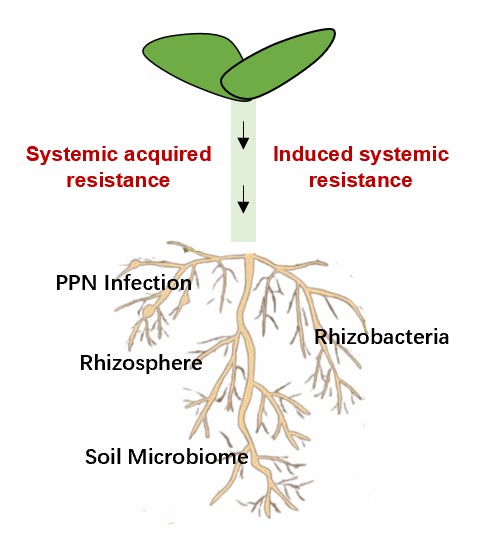The rapid spread of nematode disease, which is increasing year by year, has made it one of the most serious agricultural pests in the country, and its control is urgent. The evolution of its companion microbial communities may be one of the main reasons for the differences in the pathogenicity of different strains of nematodes. It is essential to clarify the species and dominant species of nematode companion microorganisms and to investigate the role of companion microorganisms in the pathogenesis process to promote their use in the biological control of nematode disease.
Lifeasible is a leading provider of comprehensive, high-quality services for plant sciences. We provide analysis services for nematode companion microorganisms for research purposes to customers worldwide. We look forward to working with our customers to discover the secrets of life sciences.
 Fig.1 Plants-nematodes-microbes crosstalk within soil.
Fig.1 Plants-nematodes-microbes crosstalk within soil.
Lifeasible provides fast turnaround, high-quality services at competitive prices for customers worldwide. Our advanced technical platforms can help our clients solve the problems they may encounter in research based on years of experience. If you are interested in our services or have any questions, please feel free to contact us or make an online inquiry.
Lifeasible has established a one-stop service platform for plants. In addition to obtaining customized solutions for plant genetic engineering, customers can also conduct follow-up analysis and research on plants through our analysis platform. The analytical services we provide include but are not limited to the following:
STU-CRISPR System Improves Plant Genome Editing Efficiency
April 19, 2024
Application of Exosomes in Facial Beauty
April 12, 2024